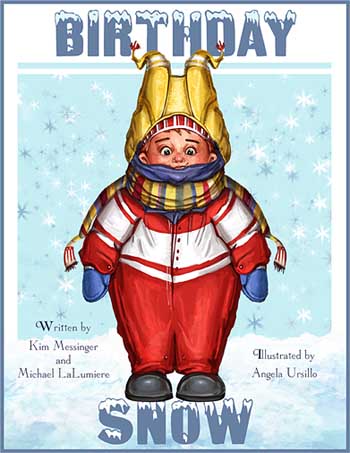"Birthday Snow'' Attempt No. 2
So my first printing - I mean test - didn't go so well.
I had a soft cover color picture book with only average color that I would have to sell for $14.95. That was never going to happen. Even my mother said, "Nice dear, but too bad it doesn't have a hard cover, it would look more professional.''
Fine.
Fortunately - I thought - LuLu started doing hard covers. I charged ahead. Better result. But it still wasn't Book Store quality. The worst thing though was it cost $21 per book to produce through LuLu. Picture books range from $14 to $17 retail. That was a non-starter.
That forced me to finally look at printing the book myself. Book printers insist you order a minimum of 1,000 to 1,500 books. The reason is it's hardly worth it to them to start up the press to only do that few. U.S. printers were too expensive. Overseas you could get it done for $2.50 to $3 a book at a 1,500 minimum press run.
Decision time. Was this book good enough for that kind of investment? Would I be stuck with a lot of books? Did I care that I would lose money? Why was I really doing this? Was I just a legend in my own mind?
I went in the tank. In no-limit hold 'em poker that's what you do when somebody goes all in and you have to decide what the hell you're going to do. You sit there trying to think of all the probabilities and either decide to throw all your money in or just fold and wait for some other hand.
I went all in.
Michael LaLumiere


